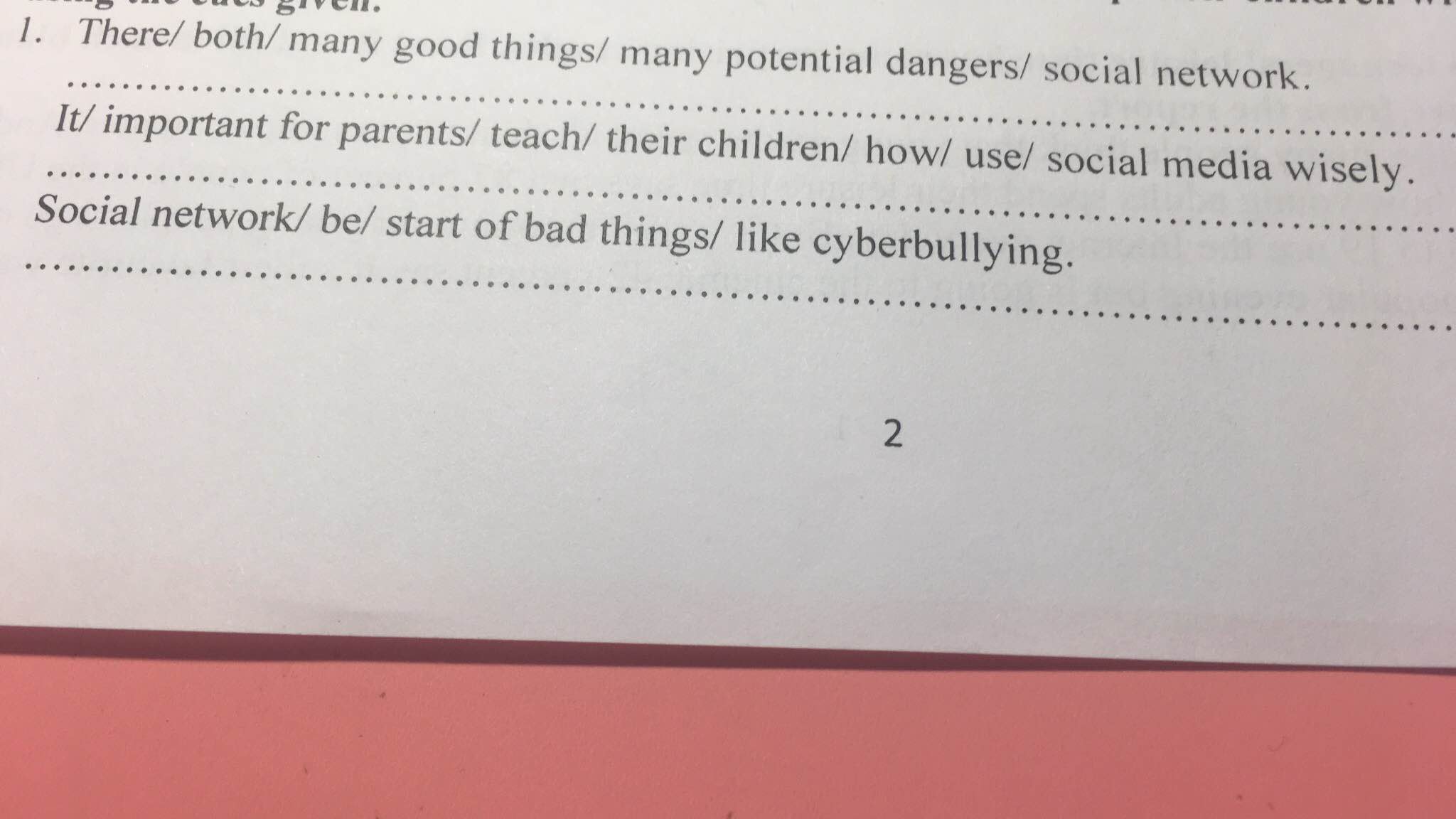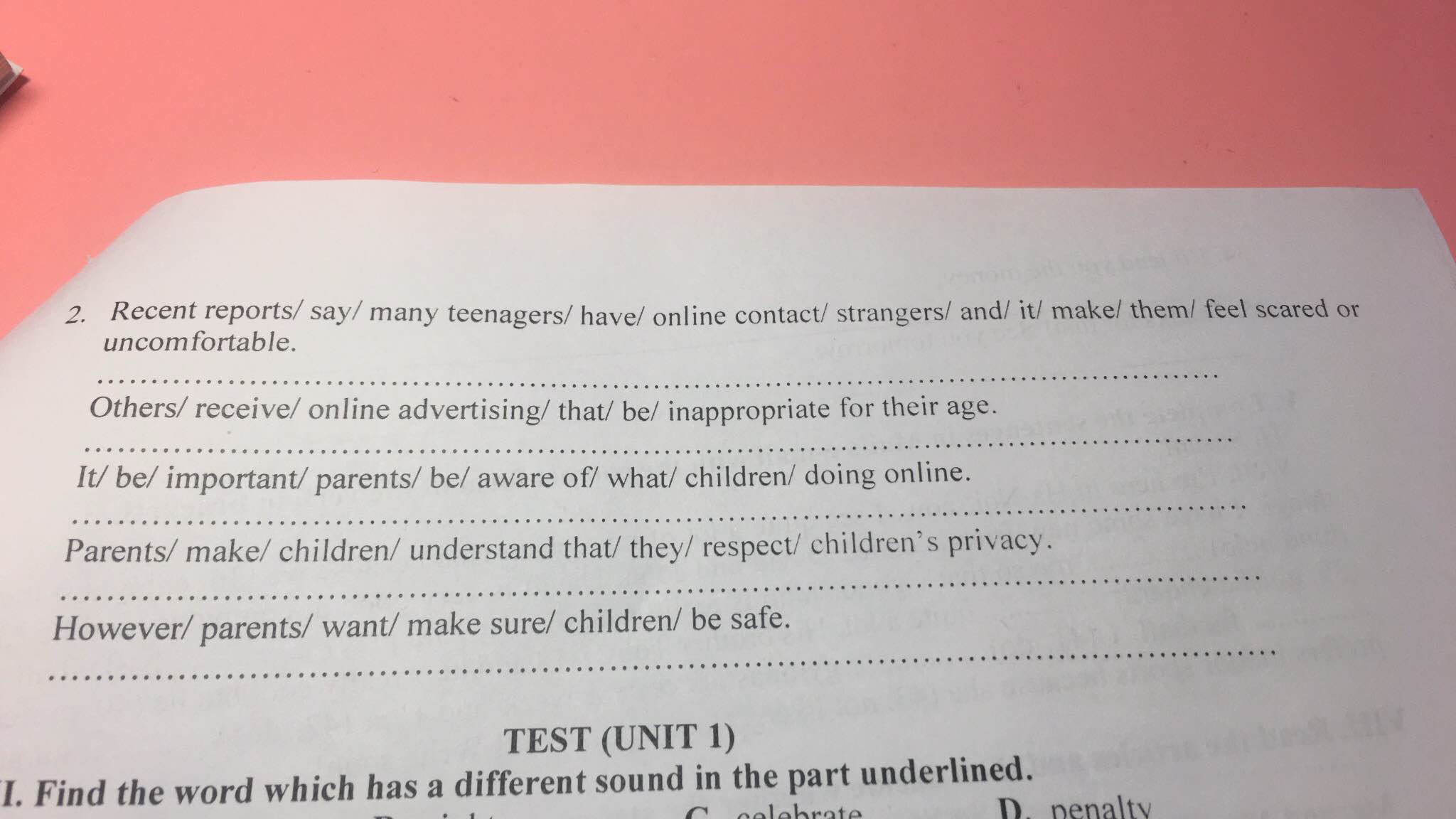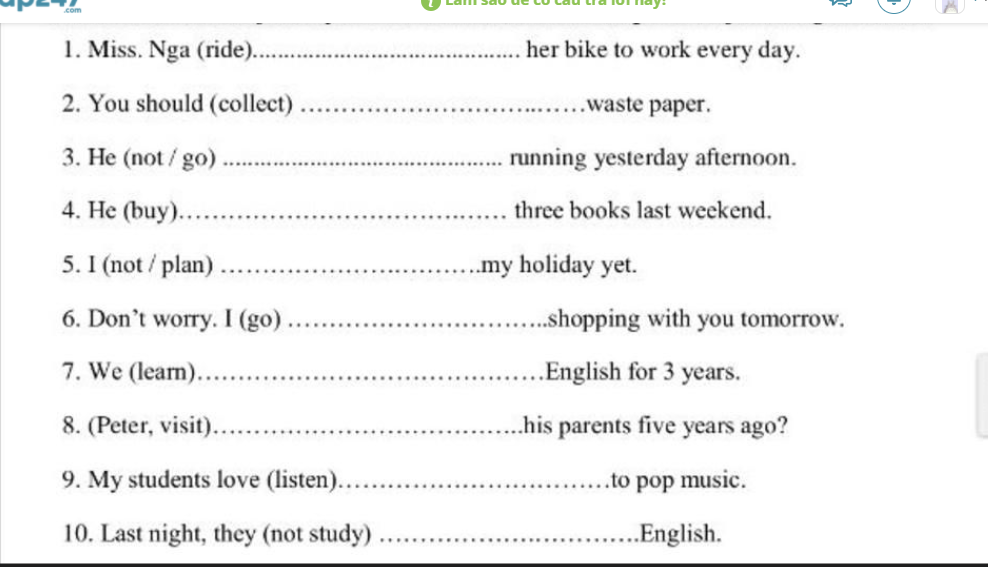
Hãy nhập câu hỏi của bạn vào đây, nếu là tài khoản VIP, bạn sẽ được ưu tiên trả lời.


1.
There are both many good things and many potential dangers in social network
It's important for parents to teach their children how to use social media wisely
Social network is the start of bad things like cyberbullying
2.
A recent report has said that many teenagers have contacted online with strangers and it makes them feel scared or uncomfortable.
Others receive onine advertising that is inapproriate for their age.
It is important that parents should be aware of what children are doing online.
Parents should make their children understand that they respect children's privacy.
However, parents want to make sure that their children are safe.

1 rides
2. collect
3. didn't go
4. bought
5. haven't plan
6. will go
7. have learnt
8. Has Peter visited
9. listening
10. didn't study
1 rides
2 collect
3 did not go
4 Bought
5 have not planned
6 will go
7 have learnt
8 Did Peter and his parents visit
9 listening
10 did not study


Từng tranh theo từ trên xuống và qua rồi đó bạn ^^ hay để mình chụp từng bài gửi nha

cau 4 thieu than a tourist does cai cho revision for test

Exericse V:
31. B
32.C
33.C
34.A
35.D
Exercise VI:
36. A
37. D
38. C
39. C
40. C
Exercise VIIz;
41. D. time enough \(\rightarrow\)enough time
42. C. rises \(\rightarrow\) is rising
43. C. isn't telling \(\rightarrow\) don't tell
44. C. with \(\rightarrow\) \(\varnothing\)
45. C. taller \(\rightarrow\) tallest
Exercise VIII"
46.D
47.A
48.C
49.B
50.A













 mn ktra giúp mk vs, câu nào sai nhắc mk nhe
mn ktra giúp mk vs, câu nào sai nhắc mk nhe

